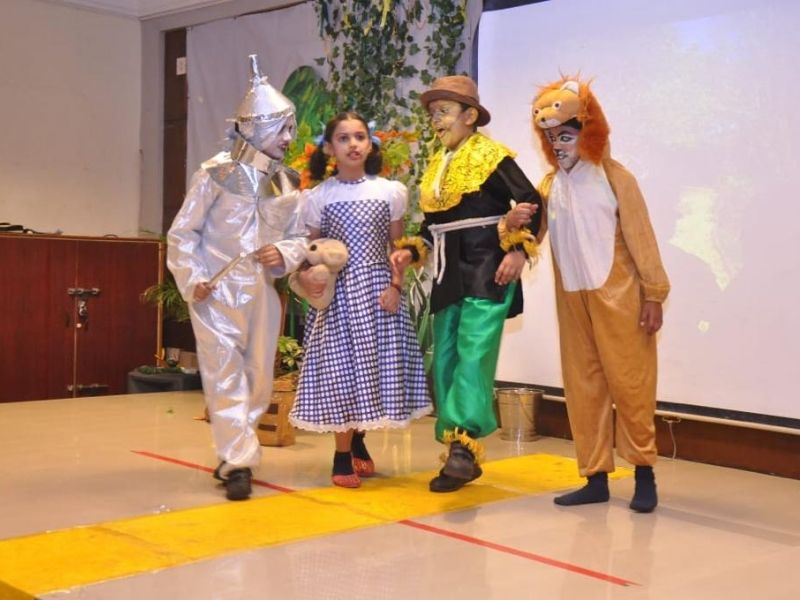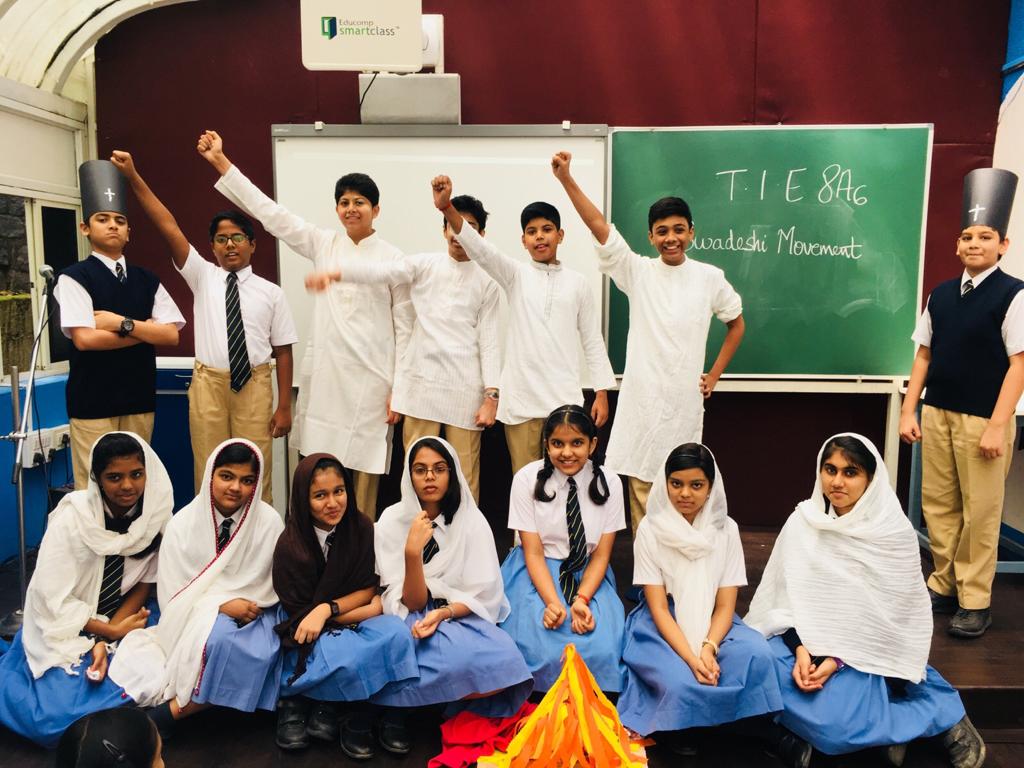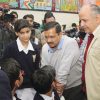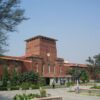The power of Drama in Education
“If you want to teach English literacy, the medium of instruction in your school is English. If you want to skill students with the capacity for creativity to the same level, the medium of instruction in the school needs to be creative.” – Ken Robinson

Humanities as a stream of study has been largely marginalised in India with generations of students being coaxed by well-meaning parents to opt for the more ‘respectable’ Science stream. To churn out more lawyers, doctors and engineers for the nation seems to be the penultimate goal of Indian parents. Even the numerical accountancy profession will do but woe befalls the unfortunate student who finds passion in drama or design. Her/his life is doomed for sure. Talking about Theatre studies, Vamshi Krishna, principal of Delhi Public School, Surat told the ‘ThePrint’, “Parents are not interested…because they see no point in it”.
Contrary to popular opinion, Theatre studies is not a Bollywood item number that a student can breeze through. Rather, it is a carefully planned syllabus designed to train individuals to inflate life into their imagination, requiring full engagement of their mind and body. CIFE – a professional association of independent sixth-form colleges in the UK – describes the A-Level Drama course as being ‘by no means a soft option’.

Kalki Koechlin
“In Theatre, you begin each time with nothing and create something. It requires daily rigour and practice as well as getting bored or finding yourself in a corner (metaphorically speaking usually) and using your imagination to get out of it,” says veteran actress Kalki Koechlin whose works have seen her act, direct and write plays including ‘Skeleton Lady’ which she co-wrote winning the MetroPlus Playwright Award in 2009.
Theatre is not confined to performance on stage. It is also becoming one of the most innovative and efficient methods of teaching. First introduced in 1966 in England, Theatre or Drama in Education (DiE) took a back seat when the country began a structured, rigid curriculum in the 70s. By the 2005, institutions began to integrate it back into the syllabus notably in Norfolk by D4LC (Drama for Learning Curriculum) and Patrice Baldwin’s documentation (2009) of this movement to introduce DiE at all levels. Now institutions all over including Cambridge, New York University (NYU), Trinity University, St Mary’s University have courses in their campuses that hone educators qualified with these methods.

According to a study by Fleming and Mills (1992), the VARK model represents the various learning styles of students – Visual (V), Aural (A), Reading and writing (R) and Kinesthetic (K). Since then, there have been countless revisions of this model but one can safely say, all students do not learn in the same way.
Drama is an instrument that caters creatively to VARK. One can divide the makings of a play into four parts – the script that must be written, the sound and words that must be spoken, the acting and lights finished with props and costumes that are made. Without explanation, dots can be connected between drama and VARK.
Indian cities are slowly assimilating these techniques into their sluggish education system. The Theatre Professionals in Mumbai is an organisation specifically focused on ‘embedding drama-based learning’ in schools across the country. Having derived scientific evidence from DICE (Drama Improves Lisbon Key Competences in Education), a two-year quantitative survey conducted in twelve EU countries analysing the efficiency of Drama in Education, Theatre Professionals also provides dramatic learning exercises and experiential pieces in their website to inspire educators.

Saras Priyadarshini
Bangalore-based Saras Priyadarshini is a practitioner of Drama in Education which she executes in various schools around the city. Each week she conducts one period with each class. There are three primary goals Priyadarshini hopes to achieve – Language Improvement, Moral Values and Confidence. For the younger ones, the classes include lessons in maths and English taught innovatively with props and settings like markets. For students of class 8 and above, the focus is more on improving their Learning, Speaking, Reading and Writing (LSRW) skills in English. “Sometimes I ask a student to draw an object on the board based on instructions given by a classmate improving their listening skills,” says the teacher who pursued engineering till she found her passion in DiE. “I don’t want to be the teacher who is fixated on ‘completing the syllabus’…instead having some drama, interaction and communication makes learning enjoyable…When I put out some objects around the room, telling the children to find the objects, they answer with phrases like ‘on the table’, ‘under the chair’ and so on. Voila! they have already learnt the lesson of prepositions!”
With pragmatic and creative qualities, drama as a mode of communication is extensive. To decorate conversation with expression is dramatic. To dress in certain styles is dramatic. To imitate an action is dramatic. In fact, having such skills assists an individual in any path they choose especially in a world where careers are evolving into the unknown. Bill Gates and Steve Jobs are pioneers in their fields. If not for their ability to harness they imagination and apply it to reality, computer science would not be an option in colleges.
At the end of the day, there should be no academic wars. Science and Arts are complementary domains. One without the other is derelict. After all, Albert Einstein did say “Imagination is everything. It is the preview of life’s coming attractions”.

















Add comment